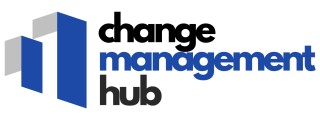-large-teaser.webp)
Understanding Application Portfolio Management
Exploring the Core of Application Portfolio Management
Application Portfolio Management (APM) serves as a pivotal framework helping organizations oversee their collection of software applications. In essence, it provides a structured approach to analyze, manage, and optimize the application landscape to align with strategic business objectives. By maintaining an accurate application inventory, companies can ensure their software solutions support overall organizational goals.
APM tools enable the organization to effectively manage its portfolio by emphasizing application rationalization—a process aimed at reducing costs and enhancing efficiency. By documenting and assessing both the business capabilities and costs associated with each application, organizations can make data-driven decisions about which applications to retain, update, or retire. This strategic management ensures that resources are allocated to technology that improves business capabilities and supports digital transformation efforts.
Implementing sophisticated APM tools can be instrumental for organizations. These tools not only support real-time data collection and analysis but also bolster enterprise architecture efforts by providing comprehensive insights into application interdependencies. This allows businesses to achieve their strategic objectives by ensuring their application portfolio aligns with both current and future needs.
The process of Application Portfolio Management is an ongoing one, demanding consistent updates and evaluations to address the evolving demands of the market. Central to this is adopting a robust set of management tools designed to offer insights and guide decision making. In this context, APM plays a crucial role in shaping the enterprise architecture landscape for organizations striving to enhance their application portfolio management strategy.
The Role of Application Portfolio Management in Change Management
The Crucial Role of APM in Navigating Organizational Change
Application Portfolio Management (APM) plays a pivotal role in managing organizational change. As organizations embark on digital transformation journeys, they face a diverse and often complex application landscape. Efficient management of this landscape is essential to align with the evolving business goals and strategic objectives. APM provides a framework that supports organizations in evaluating their current application inventory. By offering a comprehensive view of applications businesses, APM encourages strategic decision making. It enables organizations to identify redundancies, measure application costs, and streamline application rationalization processes. This insight into the application portfolio helps reduce operational costs, optimize resource allocation, and enhance the overall technology strategy. A seamless integration of APM into change management frameworks ensures that the organization's business capabilities are aligned with its technology infrastructure. By leveraging real time data, APM supports prioritization of application management tasks, crucial for effective service delivery. Organizations are equipped to make informed decisions about retiring, retaining, or procuring new software, ultimately facilitating a smoother transition during change initiatives. To explore how organizations can further optimize these processes, check out our article on optimizing ticket merge rules in service centers for additional insights.Key Features of Effective Application Portfolio Management Tools
Key Attributes of Efficient Application Management Solutions
Organizations seeking to enhance their change management strategies can benefit significantly from adopting effective application portfolio management (APM) tools. These solutions streamline processes by providing crucial insights into various aspects of the application landscape. Here are some of the pivotal features of effective APM tools:
- Comprehensive Application Inventory: A thorough inventory allows organizations to maintain an up-to-date record of all applications, their functionalities, and associated business capabilities. This enables informed decision-making and supports application rationalization efforts.
- Real-Time Data Collection: Effective APM tools offer capabilities for continuous data gathering, which is essential for maintaining the accuracy of portfolio management and supporting strategic business objectives.
- Integration with Enterprise Architecture: Seamless integration with enterprise architecture frameworks ensures that APM tools align with the broader business and technology objectives, helping organizations optimize service delivery and support their digital transformation journeys.
- Cost Analysis and Optimization: By analyzing the costs associated with each application, businesses can identify opportunities to reduce expenses through application consolidation or retirement, ultimately improving cost efficiency.
- Enhanced Decision Making: High-quality APM tools provide invaluable insights that assist in the strategic alignment of IT investments with business goals, ensuring that applications are prioritized according to enterprise needs.
- Support for Application Rationalization: These tools help organizations identify redundancies and inefficiencies in their application portfolios, facilitating a more streamlined and effective technology stack.
Adopting the right application portfolio management tools empowers organizations to make strategic decisions with greater confidence and agility. By leveraging these tools effectively, businesses can navigate the complexities of change management, addressing both current and future demands with ease. For further insights into how such tools can bolster change management efforts, the Congruence Model offers valuable perspectives.
Challenges in Implementing Application Portfolio Management Tools
Overcoming Barriers in Application Portfolio Management Implementation
Implementing Application Portfolio Management (APM) tools within an organization can be a complex endeavor. Despite their potential to streamline processes and enhance strategic decision-making, several challenges can impede their successful adoption. Understanding these obstacles is crucial for organizations aiming to leverage APM tools effectively.
Integration with Existing Systems
One of the primary challenges is integrating APM tools with existing systems and technologies. Organizations often have a diverse application landscape, making it difficult to ensure seamless integration. This can lead to data silos, where critical information is not shared across platforms, hindering the full potential of APM tools.
Data Quality and Consistency
APM relies heavily on accurate and consistent data collection. However, organizations may struggle with maintaining data quality across various applications and business units. Inconsistent data can lead to flawed analyses and decision-making, undermining the strategic benefits of APM.
Cost and Resource Allocation
The costs associated with implementing APM tools can be significant. Organizations must allocate resources not only for the initial setup but also for ongoing maintenance and support. Balancing these costs with the anticipated benefits is a critical consideration for businesses.
Change Management and User Adoption
Successful implementation of APM tools requires a robust change management strategy. Employees may resist adopting new technologies, especially if they perceive them as a threat to their roles or if they are not adequately trained. Ensuring user adoption through effective change management practices is essential.
Aligning with Business Objectives
APM tools must align with the organization's strategic goals and business objectives. Without clear alignment, the tools may not deliver the desired outcomes, leading to dissatisfaction and underutilization. Organizations need to ensure that APM initiatives support their broader business capabilities and objectives.
By addressing these challenges, organizations can better position themselves to harness the full potential of APM tools, driving digital transformation and achieving their strategic goals.
Best Practices for Leveraging Application Portfolio Management Tools
Leveraging Tools Timely and Effectively
Successful deployment of Application Portfolio Management (APM) tools can significantly enhance an organization's business capabilities by aligning with its strategic goals and addressing complex business objectives. Here are some best practices for maximizing the benefits of APM tools:
- Thorough Application Inventory: Begin with a comprehensive application inventory that captures crucial details about each software in use. An accurate inventory provides a solid foundation for application rationalization and supports informed decision making.
- Enhanced Data Collection: Ensure your APM tools offer robust capabilities for data collection. Real-time data tracking enhances application management and helps in identifying which applications are crucial for the organization's digital transformation.
- Engage Stakeholders Early: Involve key stakeholders in the application portfolio management process from the start. Their insights will enrich the understanding of the application landscape and set realistic business goals.
- Align with Business Strategy: Application management should reflect the overall business strategy. This alignment guarantees that tech investments are strategically sound and cost-effective, minimizing costs and maximizing business support.
- Utilize Comprehensive APM Tools: Leverage a tool like Ardoq that delivers versatile enterprise architecture insights and real-time analytics. Such capabilities improve decision making and streamline application rationalization efforts.
- Continual Review Process: Establish an ongoing review mechanism to regularly assess the application's contribution toward achieving enterprise-level objectives. This continuous loop allows organizations to adapt promptly to evolving business needs.
- Build Cross-Functional Teams: Implement a cross-functional team approach that combines IT and business expertise. This approach ensures that the technical capabilities align with operational business needs.
By incorporating these best practices, organizations can navigate the complex application landscape effectively, ensure cost efficiency, and enhance the enterprise's capabilities to achieve their business targets successfully. Transitioning with the right APM tools can pave the way for comprehensive service delivery and drive impactful transformations within the organization.
Case Studies: Successful Change Management with Application Portfolio Management Tools
Transforming Business Capabilities with APM Tools
Organizations across various sectors have successfully leveraged application portfolio management (APM) tools to enhance their change management processes. These tools have proven instrumental in aligning business objectives with technology strategies, ultimately driving digital transformation.
Case Study 1: Streamlining Application Inventory
One enterprise faced challenges with a sprawling application landscape, leading to increased costs and inefficiencies. By implementing APM tools, they were able to conduct a comprehensive application inventory. This process enabled them to identify redundant applications and streamline their portfolio, resulting in significant cost savings and improved service delivery.
Case Study 2: Enhancing Decision Making with Real-Time Data
Another organization utilized APM tools to support strategic decision making. By harnessing real-time data, they gained insights into their application portfolio's performance and business capabilities. This data-driven approach allowed them to prioritize investments in technology that aligned with their business goals, enhancing their competitive edge.
Case Study 3: Achieving Enterprise Architecture Alignment
In a bid to improve their enterprise architecture, a company adopted APM tools to better manage their applications. These tools facilitated the alignment of their application management with broader business strategies, ensuring that their technology investments supported long-term objectives. The result was a more agile and responsive organization, capable of adapting to market changes swiftly.
Case Study 4: Leveraging Ardoq for Application Rationalization
Utilizing Ardoq, a leading APM tool, an organization embarked on an application rationalization journey. This initiative focused on reducing complexity and optimizing their application portfolio. By following best practices in application management, they achieved a more efficient and cost-effective technology environment, supporting their strategic growth plans.
These case studies illustrate the transformative impact of effective application portfolio management tools. By addressing challenges and implementing best practices, organizations can enhance their change management capabilities, ultimately driving success in today's dynamic business environment.












